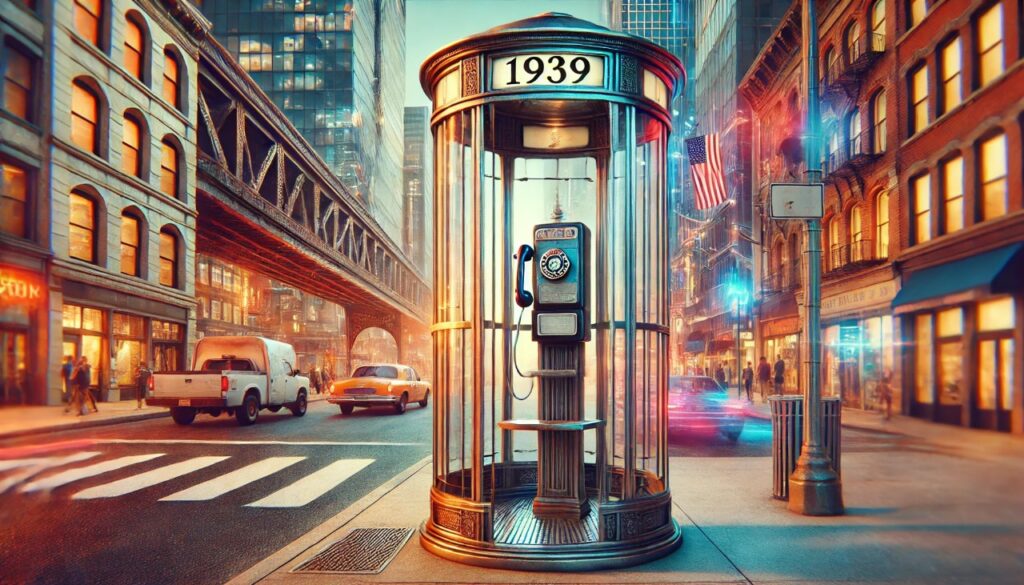Introduction
Picture this: It’s the late 1930s. The world is shifting under the weight of rapid technological advancements, and on street corners across America, outdoor phone booths are popping up, connecting people in ways they had never imagined. Fast forward to today, and these iconic booths have mostly disappeared, replaced by smartphones and Wi-Fi hotspots. But there’s still something magical about those vintage 1939s outdoor phone booths. So, just how many of these relics are still standing in the United States today? Let’s dive into the numbers, the nostalgia, and the stories behind these enduring symbols of a bygone era.
A Brief History of the Outdoor Phone Booth
Before we talk numbers, let’s take a stroll down memory lane. The outdoor phone booth, as we know it, started gaining popularity in the early 20th century. By the 1930s, these booths were a staple of urban and rural landscapes alike, offering an accessible way for people to make calls on the go. In 1939, phone booths took on a new level of prominence thanks to innovations in design and functionality. Encased in sturdy glass and metal, these booths were built to withstand the elements while maintaining their Art Deco-inspired style.
For decades, these booths served as a lifeline for travelers, businessmen, and everyday citizens. They weren’t just functional; they were cultural icons. From their appearance in movies to their role in superhero lore (looking at you, Superman), phone booths became a symbol of connection and mystery.
How Many 1939s Outdoor Phone Booths Are Still Around?
Tracking the exact number of surviving 1939s outdoor phone booths in the U.S. is tricky. Many booths have been removed, repurposed, or left to decay. However, based on data from preservation organizations and historical societies, it’s estimated that fewer than 10,000 outdoor phone booths remain nationwide. Of these, only a fraction can be verified as dating specifically to the 1939 era. Enthusiasts and historians suggest that there may be around 1,000 to 1,500 authentic 1939 models still standing or preserved in some capacity.
Here’s a breakdown of where you might find them:
- Urban Areas: Some larger cities, like New York and Chicago, still have a handful of vintage booths that have been preserved for their historical value.
- Rural Communities: Surprisingly, rural areas often have higher survival rates for old phone booths, as they’re less likely to have been replaced by modern infrastructure.
- Museums and Private Collections: Many 1939s booths have found a second life in museums or private collections, where they’re celebrated as artifacts of communication history.
- Repurposed Booths: Some booths have been converted into mini-libraries, art installations, or even charging stations for modern devices.
Why Are These Phone Booths So Rare?
There are several reasons why 1939s outdoor phone booths are so scarce today:
- Technological Advances: The rise of cell phones and smartphones rendered public phone booths obsolete. By the early 2000s, most booths were being removed en masse.
- Cost of Maintenance: Outdoor phone booths required regular upkeep to remain functional and presentable. As their usage declined, maintaining them became financially unsustainable for telecom companies.
- Scrap and Recycling: During periods of economic downturn, many phone booths were dismantled and sold for scrap metal.
- Urban Development: In many cities, the push for modernization led to the removal of phone booths to make way for other infrastructure.
The Nostalgia Factor: Why We Love 1939s Phone Booths
Despite their dwindling numbers, outdoor phone booths from the 1939 era continue to hold a special place in our hearts. Here’s why:
- Design: The sleek, minimalist design of 1939s booths reflects the Art Deco movement of the time, making them not just functional but also visually stunning.
- Cultural Significance: These booths have appeared in countless movies, TV shows, and books, cementing their status as pop culture icons.
- A Simpler Time: For many, these booths represent an era before constant connectivity—a time when a phone call was a deliberate act, not an afterthought.
Where to Find and Experience 1939s Phone Booths Today
If you’re eager to see a 1939s outdoor phone booth for yourself, here are some tips:
- Visit Historical Sites: Some towns and cities have preserved their phone booths as part of historical landmarks.
- Check Out Museums: Many telecommunications museums feature vintage phone booths as part of their exhibits.
- Explore Online Communities: Enthusiast groups and forums often share locations of surviving booths and tips for finding them.
- Travel to Iconic Locations: Cities like London and New York still maintain a few booths for tourists and nostalgia seekers.
The Future of 1939s Outdoor Phone Booths
While the era of the outdoor phone booth has largely come to an end, there’s a growing movement to preserve and repurpose these relics. Organizations dedicated to historical preservation are working to save remaining booths from demolition. Meanwhile, artists and innovators are finding creative new uses for them, from Wi-Fi hotspots to vertical gardens.
In a world that’s constantly moving forward, these phone booths remind us of the importance of looking back. They’re more than just artifacts; they’re touchstones to a time when life was a little less connected but perhaps a little more intentional.
Conclusion
So, how many 1939s outdoor phone booths are still standing in the U.S.? While the exact number may be elusive, it’s clear that these vintage booths are a rare and cherished part of our history. Whether you’re a history buff, a design enthusiast, or just someone who appreciates a good dose of nostalgia, these booths offer a fascinating glimpse into the past. As we move further into the digital age, let’s not forget the humble phone booth and the role it played in shaping the way we connect with each other. Who knows? Maybe the next time you pass one, you’ll stop, step inside, and imagine what it was like to make a call in 1939.
